


A Timeless Connection
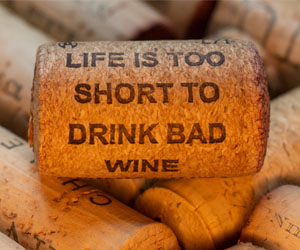
Wine, often referred to as the nectar of the gods, has a history that stretches back thousands of years. This exquisite beverage is not only an artful creation but also a fascinating portal into the annals of human civilization. To explore the connection between wine and history is to embark on a journey through time, witnessing the evolution of societies, the influence of trade, and the interplay of culture and viticulture.
Ancient Beginnings: The history of wine begins in the cradle of civilization, the region surrounding the modern-day countries of Georgia and Iran. Archaeological evidence suggests that winemaking dates back over 8,000 years. The early civilizations of Mesopotamia, including the Sumerians and Babylonians, were among the first to cultivate grapes and produce wine. These ancient cultures not only enjoyed wine but also incorporated it into their religious ceremonies, considering it a divine gift.
Greece And Rome: The Greeks and Romans further embraced the culture of wine, and it became an integral part of their daily lives. In ancient Greece, wine was deeply intertwined with their mythology and philosophy. Dionysus, the god of wine, held a revered place in Greek mythology. Philosophers like Plato and Aristotle discussed the influence of wine on society and the importance of moderation.
The Romans, too, played a pivotal role in the history of wine. They expanded vine cultivation across their vast empire, introducing new techniques in viticulture and winemaking. The famous phrase "in vino veritas" (in wine, there is truth) emerged from Roman culture, emphasizing the way wine could loosen tongues and reveal one's innermost thoughts.
Medieval Monasteries: Throughout the Middle Ages, wine remained a significant part of European culture. Monasteries became centers of wine production and preservation. Monks carefully cultivated vineyards and perfected the art of winemaking, leading to the creation of some of the world's most renowned wine regions, such as Bordeaux and Burgundy.
Exploration And Trade: As European explorers set out to conquer new lands, they brought vines with them to cultivate wine in their new colonies. Wine became a valuable trade commodity, driving exploration and colonization. Spanish missionaries, for instance, planted vineyards in California, paving the way for the Napa Valley wine region.
Modern Times: In more recent history, the 19th and 20th centuries witnessed significant advancements in winemaking techniques and the establishment of regulations governing the production of wine. Winemakers like Louis Pasteur made groundbreaking contributions to the science of fermentation, ensuring the consistent quality of wine.
Today, wine is produced and enjoyed on a global scale. Wine regions span the world, from the vineyards of France and Italy to the emerging wine industry of New Zealand. Wine continues to be a symbol of celebration, sophistication, and the finer things in life.
The history of wine is a captivating journey through the epochs of human civilization. From its ancient origins to its crucial role in religion, philosophy, and trade, wine has left an indelible mark on the course of history. It has evolved from a simple agricultural product to a symbol of culture, refinement, and the enduring connection between the past and the present. The history of wine is not just a story of fermented grapes; it's a story of human ingenuity, exploration, and the quest for the perfect glass of wine.

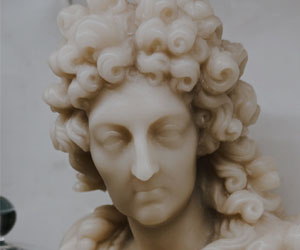

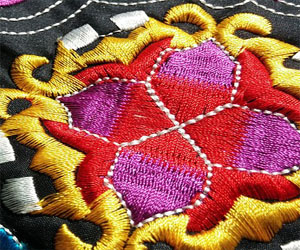
Beauty From The Earth, For The Earth
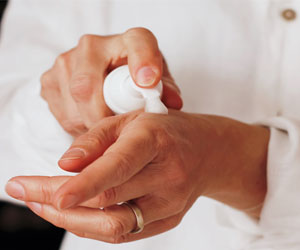 Nature's Bounty: Natural cosmetics are crafted from botanical and organic ingredients such as plant extracts, essential oils, and minerals. These clean ingredients nourish the skin, providing a safer and more holistic approach to beauty.
Nature's Bounty: Natural cosmetics are crafted from botanical and organic ingredients such as plant extracts, essential oils, and minerals. These clean ingredients nourish the skin, providing a safer and more holistic approach to beauty.
Clean Formulations: Natural cosmetics are free from harsh chemicals, synthetic fragrances, and toxic additives commonly found in conventional cosmetics. They prioritize the use of clean, safe, and non-toxic ingredients, reducing the risk of skin irritations, allergies, and long-term health concerns.






Homemade Candle Recipes For DIY Enthusiasts
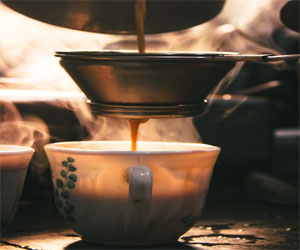 Materials:
Materials:
Wax (multiple colors for layering)
Wick
Fragrance oils (various scents)
Candle dye (multiple colors)
Heat-resistant container
Double boiler or microwave-safe bowl
Steps:
Prepare the container and wick as in the basic container candle recipe.
Melt each color of wax separately, adding specific fragrances and dyes.
Pour the first layer of wax into the container, allowing it to cool and solidify.
Repeat this process with different colors and scents, creating layered bands of wax.
Let the candle cool completely, trim the wick, and enjoy the fragrance and beautiful layers.
3. Upcycled Teacup Candle Recipe:
Materials:
Old teacup or small container
Wax
Wick
Fragrance oil (optional)
Candle dye (optional)
Double boiler or microwave-safe bowl
Steps:
Crafting A Sustainable Future
 The Essence Of Green DIY Projects
The Essence Of Green DIY Projects
Green DIY projects combine creativity with sustainability, providing a platform for you to express yourself while making environmentally responsible choices. These projects encompass a wide range of activities, from upcycling furniture and crafting eco-friendly home decor to making your own natural cleaning products or gardening with organic, homegrown produce.
Environmental Benefits
One of the most significant advantages of green DIY projects is their environmental impact. By consciously choosing sustainable materials, repurposing items, and reducing waste, these projects contribute to a greener and more eco-friendly world. They help lower the carbon footprint by diverting usable materials from landfills, conserving resources, and minimizing the environmental impact of manufacturing and transportation.
Promoting Sustainability
Green DIY projects promote sustainability in multiple ways. They encourage you to use sustainable, eco-friendly materials, such as reclaimed wood, bamboo, recycled fabrics, and non-toxic paints. By crafting your own goods, you also reduce the demand for mass-produced items, which often involve harmful chemicals, excessive packaging, and wasteful practices.
Cost-Efficiency
Many green DIY projects offer cost-efficiency. Making your own household products, for example, can save you money in the long run. Crafting your own furniture or decor can be more economical than buying new items, especially if you upcycle or repurpose materials you already have or find in thrift stores.
Exploring Herb Uses In Cooking
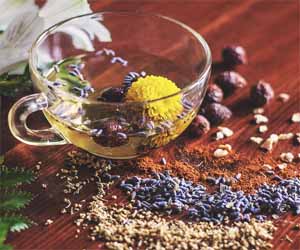 Rosemary And Lamb: Rosemary's robust flavor pairs harmoniously with the rich and tender nature of lamb.
Rosemary And Lamb: Rosemary's robust flavor pairs harmoniously with the rich and tender nature of lamb.
Mint And Desserts: Mint's refreshing taste is perfect for desserts like chocolate mousse or fruit salads.
Parsley And Seafood: The bright, grassy flavor of parsley beautifully complements seafood dishes, such as shrimp scampi.
Versatile Uses
Herbs are incredibly versatile and can be used in various culinary applications:
Marinades: Herbs can be included in marinades to infuse meat, poultry, or vegetables with flavor. For example, a marinade of garlic, rosemary, and lemon juice can transform chicken into a delectable dish.
Sauces And Dressings: Herbs can be used to create vibrant sauces, such as pesto or chimichurri, or to elevate salad dressings, like a balsamic vinaigrette with fresh basil.
Flavoring Meats: Herbs can be used as a rub or stuffing for meats, adding depth and aroma. Sage and thyme with turkey, for instance, create a classic Thanksgiving flavor.
Craftsmanship And Artistry In Clay
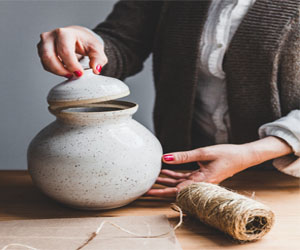 The Creative Process: The creation of handmade ceramics begins with selecting the right type of clay, which can range from earthenware to stoneware to porcelain, each offering unique characteristics and possibilities. Once the clay is chosen, it's hand-worked into the desired shape, whether a functional piece like a bowl or a purely decorative sculpture.
The Creative Process: The creation of handmade ceramics begins with selecting the right type of clay, which can range from earthenware to stoneware to porcelain, each offering unique characteristics and possibilities. Once the clay is chosen, it's hand-worked into the desired shape, whether a functional piece like a bowl or a purely decorative sculpture.
Artists often experiment with textures, patterns, and surface treatments to give their pieces a distinct character. They may carve, incise, or use various glazing and decorating techniques to achieve their artistic goals. Each piece reflects the artist's individual style and creative expression.
The Human Touch: What sets handmade ceramics apart is the human touch evident in every detail. These pieces bear the imperfections and idiosyncrasies that result from the artist's hands, making each item truly unique. The texture of the clay, the nuance of the glaze, and the individual characteristics of the artist's work contribute to the rich diversity of handmade ceramics.
Functional And Decorative Art: Handmade ceramics serve a dual purpose in both the realms of functional and decorative art. Many artists create pottery that is not only beautiful but also functional, such as mugs, plates, and vases. These pieces add a personal and artistic touch to everyday life, enhancing the aesthetic experience of daily rituals like enjoying a cup of coffee or arranging flowers.
On the other hand, decorative ceramics explore the boundaries of the medium and often serve as standalone art pieces. Sculptural and abstract in nature, they challenge conventional notions of pottery and ceramics, pushing the limits of what can be achieved with clay.
The Role Of The Artist: Handmade ceramics emphasize the role of the artist as a creator, with each piece reflecting their unique perspective, skill, and creativity. These artists invest time and energy into honing their craft and often form a deep connection with the materials and the process itself.